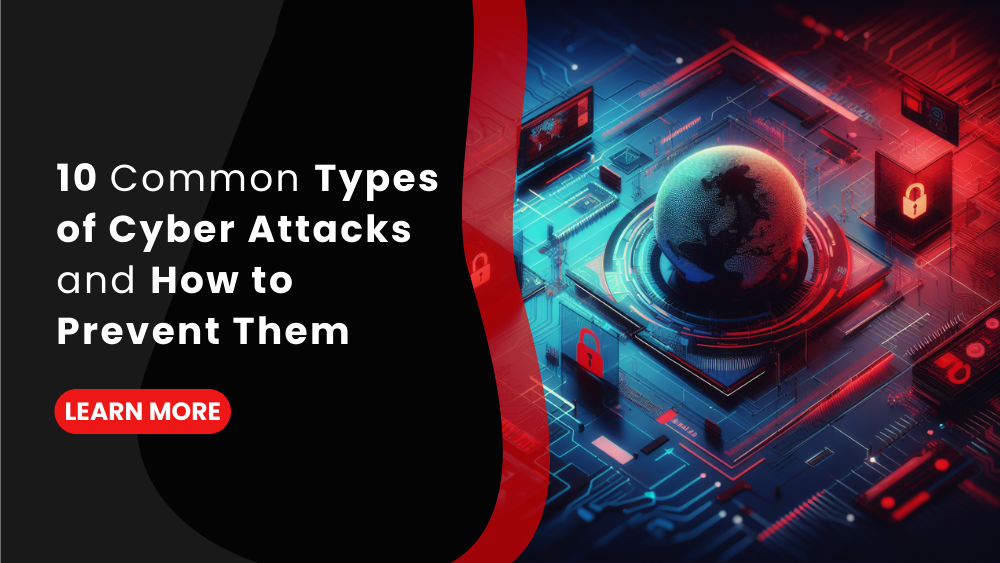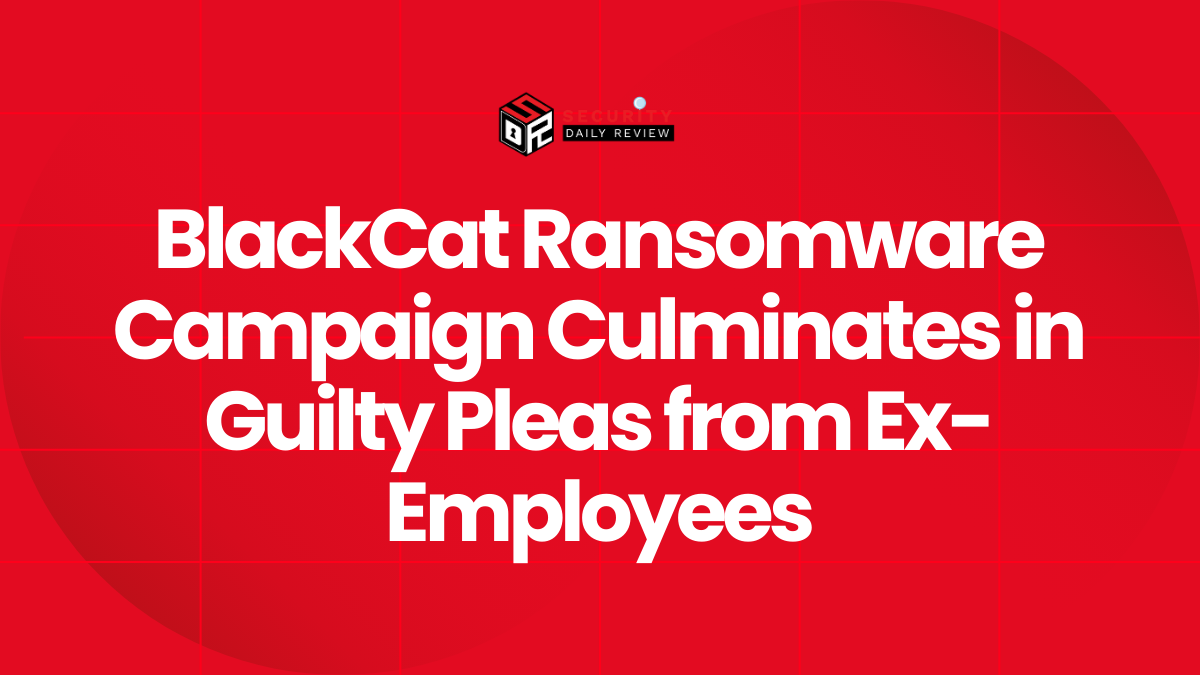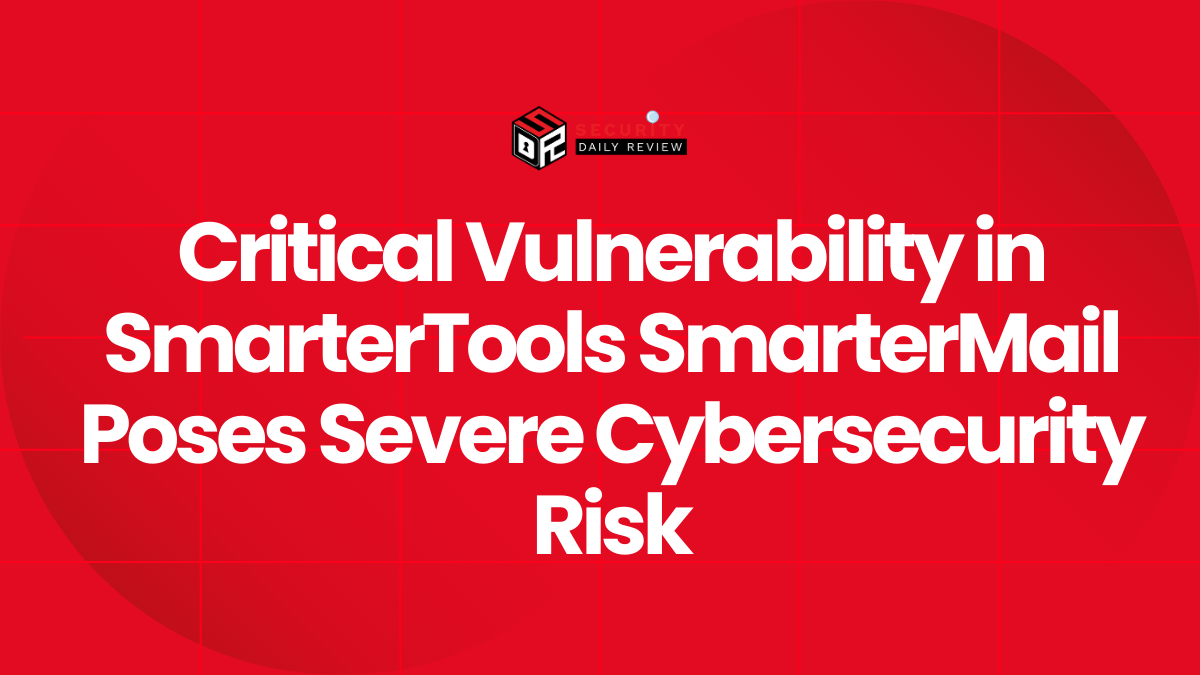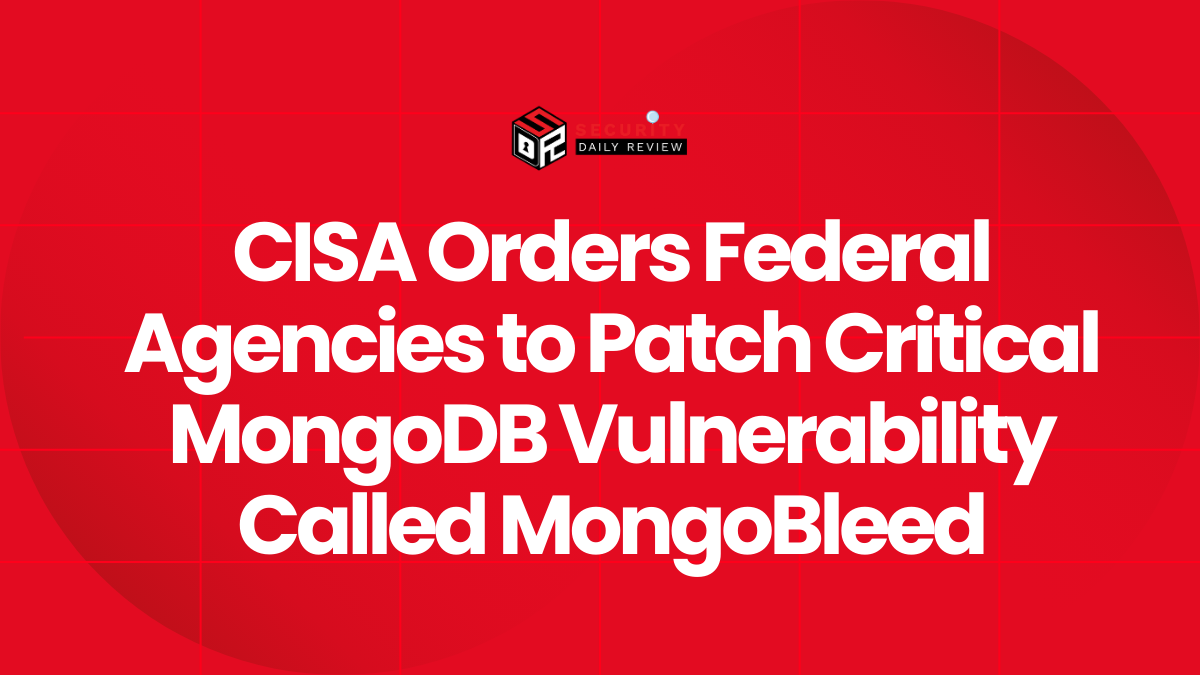The digital age has brought convenience and connection, but it’s also opened the door to a growing threat: cyberattacks. These malicious attempts can steal data, cripple operations, and erode trust, leaving organizations vulnerable.
Cybercriminals have a vast arsenal at their disposal, exploiting weaknesses to gain unauthorized access. Understanding these common attack methods is your first line of defense.
This blog dives deep into 10 prevalent cyberattacks, exploring their impact and providing actionable prevention strategies to keep your organization safe.
Top 10 Cyberattacks Every Business Needs to Know About
Here are the top 10 cybersecurity threats that every cybersecurity professional should be aware of.
1. The Silent Threat: Understanding Script-Based Malware Attacks
Script-based malware is an increasingly common threat that uses programming scripts to carry out malicious activities on infected devices.
How Cyberattackers Execute Script-Based Malware Attacks?
These scripts are written in languages like JavaScript, VBScript, Python, or AutoIt which allow malware authors to automate complex behaviors without needing to compile full executable files. This makes script malware easier to develop, update, and distribute compared to traditional malware programs.
Script-based malware spreads by exploiting vulnerabilities in browsers, browser plugins, file sharing services, and other applications. The scripts are delivered when users unknowingly visit infected websites or willingly download and run files containing embedded malicious code.
Once executed, the scripts can carry out a wide range of harmful actions, including installing backdoors, stealing information, downloading additional payloads, and coordinating large botnets for distributed denial of service attacks.
Some of the most prevalent script-based malware families currently include Emotet, Trickbot, Dridex, and QBot, which are commonly distributed in weaponized Microsoft Office documents and PDFs leveraging auto-execute macros and scripts.
Defending against these threats involves keeping systems up-to-date, avoiding unsafe file/link sharing, using antivirus software, limiting browser scripting, and monitoring for suspicious outgoing network activity which could indicate a compromise requiring further investigation and remedy.
As script malware allows sophisticated automation with fewer development hurdles compared to compiled programs, ongoing diligence is important to prevent and detect script-based infections before serious damage can occur.
2. Friend or Foe? Unveiling the Tricks of Phishing Emails
Phishing attacks are a form of social engineering where hackers try to trick users into providing sensitive information such as usernames, passwords, credit card details, or bank account information.
Attackers do this by sending personalized emails or messages that appear to be from a legitimate source, such as a bank or other company the user has an account with.
These communications contain links to fake login pages or sites that are designed to look identical to the real ones. When victims enter their credentials on these maliciuos sites, the phishers gain access to this private information.
Phishing is one of the primary ways that cybercriminals perform data theft and steal identities and money. Users can protect themselves by being wary of unsolicited requests for their details, hovering over links to check their destination, looking for misspellings or other errors on websites, and using strong and unique passwords for each online account.
Security awareness is also crucial, as sophisticated phishing scams are all too easy to fall for even for experienced technology users.
6 Common Types of Phishing Attacks
- Email Phishing: This is the most common type of phishing attack, where hackers send fraudulent emails pretending to be from a legitimate source. These emails often contain links or attachments that, when clicked or downloaded, can lead to the installation of malware or the disclosure of personal information.
- Spear Phishing Attacks: In spear phishing attacks, cybercriminals target specific individuals or organizations. They gather information about their targets to personalize the attack and make it appear more legitimate. This can include using the target’s name, position, or other relevant details to increase the chances of success.
- Whaling: Whaling attacks are a type of spear phishing that specifically targets high-level executives or individuals with access to sensitive information. The attackers often impersonate CEOs or other top-level executives to trick their targets into revealing confidential data or performing unauthorized actions.
- Smishing and Vishing: Smishing refers to phishing attacks conducted through SMS or text messages, while vishing refers to phishing attacks conducted over voice calls. These attacks aim to deceive individuals into providing personal information or performing certain actions by posing as a trusted entity, such as a bank or service provider.
- Pharming: Pharming attacks involve redirecting victims to fake websites that mimic legitimate ones. The attackers manipulate the victim’s DNS settings or use malware to redirect them to these fraudulent sites, where they may be prompted to enter sensitive information.
- Evil Twin Phishing: In an evil twin attack, hackers set up a fake Wi-Fi network that appears legitimate. When individuals connect to this network, their internet traffic can be intercepted, allowing the attackers to capture sensitive information such as login credentials or financial details.
3. Locked Down: Understanding the Threat of Ransomware Attacks
One of the most prevalent and damaging forms of malware today is ransomware. Ransomware encrypts a victim’s important files and demands ransom payment, usually in cryptocurrency, in exchange for a decryption key.
Some of the most prominent ransomware groups currently active include Conti, REvil, Avaddon, DarkSide, Lockbit, BlackCat, Cl0P, and Ryuk. These groups tend to target large organizations and enterprises where downtime can significantly impact operations.
These sophisticated ransomware groups often gain initial access to enterprise networks through phishing emails containing malicious attachments or links.
Another popular initial infection vector is exploiting vulnerable remote desktop protocol (RDP) servers that are directly exposed to the internet.
Once the malware is running on one system, it then spreads laterally throughout the network by taking advantage of weak authentication on file shares and remote administration tools.
The ransomware encrypts files on local drives, network file shares, backups, databases, and any other clustered or networked storage it can access.
Once file encryption is complete, a ransom note is left behind with instructions on how to purchase a decryption key, usually through anonymous cryptocurrency payments.
Ransoms demanded for full file restoration have increased significantly in recent years, with some groups requesting millions of dollars in Bitcoin for larger victims.
Even after paying, there is no guarantee the victim’s files can be decrypted successfully.
The Most Notorious Ransomware Groups
Here are some of the most notorious ransomware groups and some of their high-profile attacks:
- REvil/Sodinokibi – Attacked the world’s largest meat processor JBS USA in 2021, receiving a $11 million ransom payment. Also targeted Apple supplier Quanta Computer.
- Cl0P Ransomware – Known for the most recent ransomware attacks on Forta’s GoAnywhere breach and MOVEit ransomware attack 2023.
- Conti – Has attacked numerous hospitals, schools, and local/state governments. Recently leaked their internal documents online after being linked to Russian intelligence.
- LockBit – Famous for targeting the healthcare sector. Among the latest ransomware attacks by LockBit include the Capita Health breach and KHO network of Hospitals.
- DarkSide – Originated the attack that shut down the Colonial Pipeline gasline in 2021, receiving $4.4 million from Colonial. Also targeted Broward County Public Schools.
- Ryuk – Believed to be deployed by the same group behind Trickbot/Bazar backdoors. Notable victims include the city of New Bedford and Champaign Public Health District.
- Maze – One of the earliest ransomware-as-a-service groups. Impacted major companies like LG Chemical and CWT. Publicly leaked some victims’ data if not paid.
- Avaddon – Hit the Minnesota Court of Appeals and Ireland’s healthcare service in late 2021. One of the more active groups currently.
- RagnarLocker – Breached the Washington D.C. Metropolitan Police Department computer network in 2021.
- RobinHood – Attacked universities in Italy, Portugal, and Michigan in early 2022, disrupting online classes.
For more details on the most high-profile ransomware attacks, read our blog on the 10 Major Data Breaches and Cyber Attacks in 2023.
4. Beyond Spam: How Spear Phishing Attacks Target You Specifically
Spear phishing is a targeted form of phishing that uses reconnaissance to craft highly customized phishing emails designed to trick specific individuals or organizations.
Attackers will investigate their targets both online and through open-source intelligence to determine the best way to impersonate a trusted person and convince the recipient to click a malicious link or attachment.
Once compromised devices have been accessed, threat actors can steal credentials, install backdoors, and move laterally across the target’s network.
Government agencies and corporations in sectors like defense, technology, engineering, and pharmaceuticals are regularly subjected to spear phishing attempts from state-sponsored hacking groups and cybercrime syndicates.
These actors understand that compromised accounts within these organizations could provide access to valuable intellectual property, proprietary research, infrastructure plans, or sensitive government information.
Spear phishing emails will often imitate the style and tone of colleagues or trusted partners to lower defenses. Common lures involve links to fake login pages or documents designed to install remote access Trojans once enabled.
Real Word Phishing Attack Examples
Facebook and Google: Between 2013 and 2015, Facebook and Google fell victim to an extended phishing campaign that resulted in the loss of $100 million. The attacker sent fake invoices impersonating a vendor, which both companies paid.
- Crelan Bank: Crelan Bank in Belgium was targeted by a Business Email Compromise (BEC) scam, resulting in a loss of approximately $75.8 million. The attacker compromised the account of a high-level executive and instructed employees to transfer money to the attacker’s account.
- FACC: FACC, an Austrian aerospace parts manufacturer, lost $61 million to a BEC scam in 2016. The attacker posed as the company’s CEO and instructed an employee to transfer the funds to an attacker-controlled bank account. The company took legal action against its CEO and CFO for their failure to implement proper security controls.
- Upsher-Smith Laboratories: In 2014, a BEC attack against a drug company resulted in a loss of over $39 million. The attacker impersonated the CEO and instructed the accounts payable coordinator to send wire transfers. The company sued its bank for not flagging the suspicious transfers.
- Ubiquiti Networks: Ubiquiti Networks, a US-based computer networking company, lost $46.7 million to a BEC attack. The attacker impersonated the CEO and lawyer, instructing the Chief Accounting Officer to make wire transfers. The incident was discovered when the FBI notified the company of potential fraud.
Defending against spear phishing attacks requires employee training to identify subtle anomalies contradicting normal business processes and verifying unusual requests through alternate trusted channels before taking any actions such as submitting info or opening unprompted file attachments.
As social engineering remains a persistent risk, ongoing education combined with multi-layered technical safeguards help reduce the threat of these deceptive targeted phishing scams. Enhance your email security today with these best practices.
5. Hidden Eyes on Your Network: The Threat of Network Monitoring Attacks
Network monitoring attacks pose a serious risk to organizations, as they allow threat actors to covertly spy on internal network activity and intercept sensitive communications and data in transit.
Attackers may spend time researching their target to identify vulnerable systems that can be compromised to deploy snooping tools and sniffers throughout the network. Once this foothold is established, they can passively monitor all network traffic in stealth mode.
This enables them to extract valuable information like usernames, passwords, email contents, file transfers, and even payment card details that are not encrypted.
The large-scale network surveillance also provides opportunities for cyber espionage through exfiltration of confidential documents and intellectual property.
Weaknesses exploited can include remote access ports left open, outdated software or firmware, default credentials on Internet of Things devices, and weaknesses in network configuration like firewall rules.
Wireless networks are also a common initial infection point, as attackers may use packet injection tools to brute force WiFi security or even introduce rogue access points. Once monitoring is set up, it allows continued surveillance even if the initial infection vector is patched.
Network monitoring attacks illustrate why network security must be approached with a defense-in-depth mindset. Passive exploitation of authorized access points leaves data vulnerable to interception.
Organizations need multilayered safeguards combined with vigilance for atypical activity through their connections. Defenders must make eavesdropping difficult and be able to quickly detect when an unauthorized sniffer may be operating.
6. Deceived by Your Inbox: Understanding Email Spoofing Attacks
Email spoofing exploits a weakness in how email protocols work to falsify the sender address displayed to recipients. Crafting email headers to attribute a message to another person’s account, attackers can impersonate colleagues, banks, shipping companies, or any authoritative entity, tricking victims into opening attachments, clicking links, or divulging confidential information.
While tools exist that allow tracing an email’s actual transmission path back to the origination server, most people do not validate senders in this manner and are deceived by the forged display name and address. This spoofing technique has proven effective for phishing campaigns and widespread malware distribution by preying on human trust in interface elements.
Mitigations have centered around authentication frameworks adopted by email providers, such as Sender Policy Framework (SPF) records and DomainKeys Identified Mail (DKIM) signing. These append authentication data to validate messages that are authorized by the domain owners during delivery.
However, not all servers deploy these techniques universally yet. Even with such measures, it remains possible for attackers to spoof senders locally through open email relays on routers or by compromising other mail servers.
End users must employ precautions like enabling advanced phishing filters, scrutinizing senders for anomalies, avoiding clicking unsolicited file attachments, and being wary of unprompted correspondence requesting sensitive data.
7. Beyond Guesswork: How Dictionary Attacks Break Your Passwords
Dictionary attacks are a brute force technique that systematically tries vast collections of common words, names, dates, and other frequently chosen password formats against stolen or captured hashes.
Attackers leverage massive pre-compiled wordlists and rules to mutate entries, capitalizing letters or appending numbers.
When vast troves of hashed credentials become available, such as from data breaches, dictionary attacks can exploit vulnerabilities resulting from weak, predictable passwords.
Defenses may include salting hashes, slowing algorithms, multi-factor authentication, and unique passphrases with 256-bit AES encryption to lengthen cracking times against these automated guessing methods.
Nevertheless, as computing power grows, so does the intensity of brute force. The onus remains on users to choose strong, unpredictable credentials and change them regularly to avoid exposure to these wide-scale password-cracking campaigns.
8. Credential Theft & Exploitation: Account Takeover Attacks
Account takeover attacks aim to hijack existing online accounts by gaining unauthorized access. Attackers typically obtain stolen credentials from data breaches or dictionary attacks against weak passwords. They then attempt to log into targets’ email, social media, banking, and other accounts.
Once accessed, threat actors may change passwords and security questions, unlink devices, monitor activity to steal additional credentials or sensitive data, make fraudulent payments, or use the accounts to run scams or spread misinformation.
Include multi-factor authentication, regularly changing passwords on all accounts, monitoring for unauthorized access attempts, and applying strong unique passwords for each service to avoid credential reuse across sites.
9. Domain Hijacking: When Your Domain Turns Against You
Domain hijacking involves seizing control of another organization’s domain name through unauthorized changes made to the whois contact details linked to the domain.
Attackers typically research expiring domains or those with outdated contact info. They then call or email the registrar, claiming to be the valid owner, and request the transfer of the domain to themselves or to update the registration records with their details.
Once hijacked, threat actors can redirect traffic, install phishing sites, ransom the original owners, or use the domain for other illicit purposes like spreading malware or running scams.
Defenses against domain hijacking include keeping registrant information up to date, using secondary contact methods for verification, enabling email notifications of changes, and multi-factor authentication.
10. Turning Legit Sites Malicious: Code Injection Attacks
Code injection attacks insert and run malicious code within otherwise benign programs or websites. Attackers look for vulnerabilities that allow unauthorized code execution, such as lacking input validation sanitization or stored procedure vulnerabilities.
Exploited flaws may permit injecting SQL commands, HTML tags, JavaScript, or other code snippets that can then manipulate the application flow for criminal purposes. Injected code could disclose sensitive details, take over user sessions, spread malware by compromising the application interface, or redirect users to phishing pages.
Proper input sanitization, limiting database privileges, timely patching known vulnerabilities, and deploying web application firewalls can help prevent such code from executing.
Still, as long applications and websites incorporate untrusted data, injections will compromise these systems by exploiting human coding oversight and vulnerabilities. Vigilant security hygiene remains crucial for protecting users and their information.
11 Things You Can Do to Prevent Cyberattacks
Protecting your organization from cyber threats demands a comprehensive approach that melds cutting-edge technology, proactive security measures, and ongoing employee education. Here are eleven things you can do to prevent cyberattacks:
- Network Segmentation: Divide your network into segments to curtail the impact of cyberattacks. Swift segmentation contains the threat, preventing malicious entities from compromising the entire network.
- Regular Data Backups: Establish a robust backup strategy for critical data. Store backups in an isolated environment to thwart any compromise during a cyberattack. Regularly test the restoration process to ensure data integrity.
- Least Privilege Access: Embrace a least privilege access model, restricting user permissions to the essential minimum. This mitigates the impact of cyberattacks, limiting unauthorized access to sensitive data.
- Endpoint Protection: Deploy advanced endpoint protection solutions with behavioral analysis and real-time threat intelligence. These tools detect and neutralize cyber threats at the endpoint, fortifying your organization’s primary defense.
- Air-Gapped and Immutable Backups: Ensure critical data is backed up in an air-gapped and immutable environment. Air-gapped backups, physically isolated from the network, remain impervious to cyberattacks. Immutable backups prevent unauthorized alterations, ensuring data integrity.
- Threat Intelligence Integration: Integrate threat intelligence feeds into your security infrastructure to stay ahead of emerging cyber threats. Proactively update defenses based on real-time intelligence to thwart evolving attack strategies.
- Secure Remote Access Protocols: Ensure secure configurations for remote access protocols to prevent unauthorized entry, a common vector for cyberattacks. Implement robust authentication mechanisms and limit access to essential personnel.
- Patch Management: Establish a rigorous patch management process to promptly address vulnerabilities in software and operating systems. Regular updates bolster your defense against cyber threats exploiting known weaknesses.
- Incident Response Planning: Develop a comprehensive incident response plan tailored for cyberattacks. Outline clear steps for identification, containment, eradication, recovery, and lessons learned. Regularly test the plan through simulated exercises to enhance readiness.
- Detection and Response with Inline Entropy Analysis: Implement advanced detection and response mechanisms with inline entropy analysis to dynamically identify cyber threats. This proactive approach spots anomalous patterns in real-time, allowing for swift mitigation.
- Collaboration with Cybersecurity Experts: Forge partnerships with cybersecurity experts to conduct regular risk assessments and vulnerability analyses. Engage in ongoing training programs to keep your security team updated on the latest cyber threat trends and mitigation strategies.
Conclusion
As the threat landscape continues to evolve and attackers become more sophisticated, it is crucial to stay informed about the most common types of cybersecurity attacks and take proactive measures to protect your organization.
By implementing security best practices, such as keeping your software up to date, educating yourself and your employees about the risks, and using strong authentication methods, you can minimize the risk of falling victim to malware attacks.
Remember, prevention is key when it comes to cybersecurity, so stay vigilant and prioritize the security of your digital assets. To increase your cybersecurity awareness and improve your cybersecurity posture, we recommend reading our blog on, how to conduct cybersecurity assessment.









